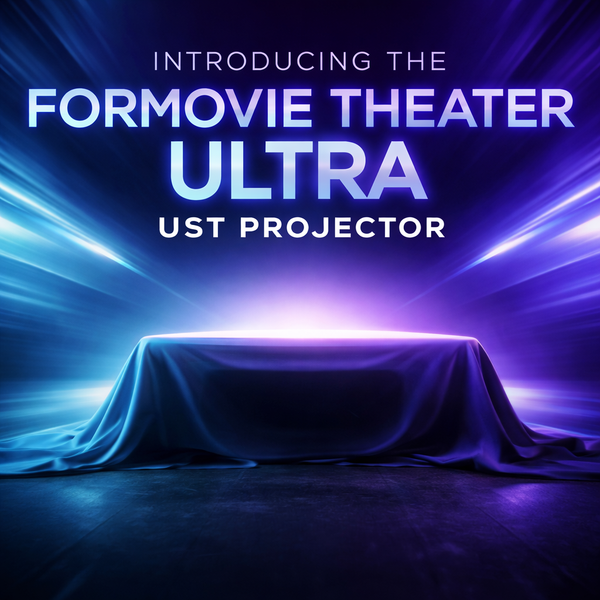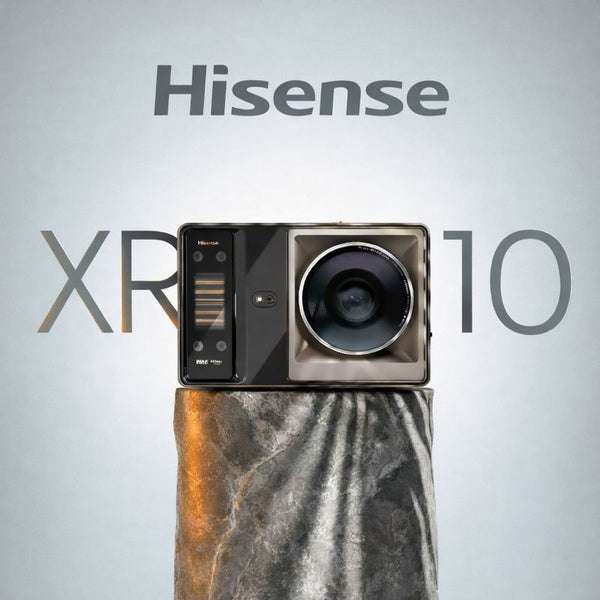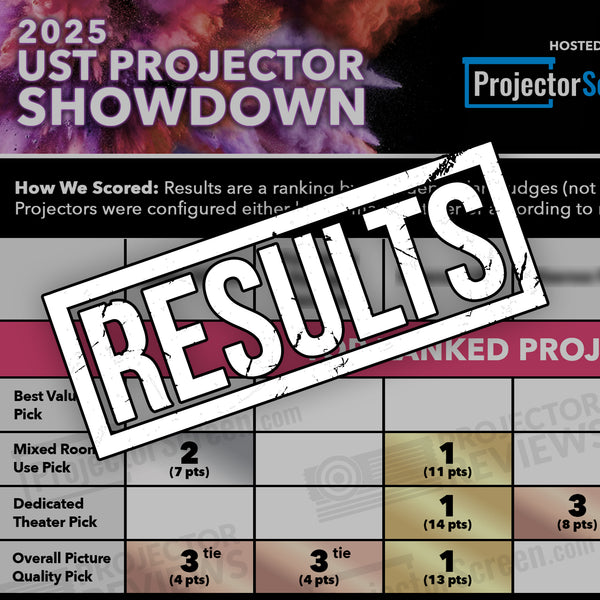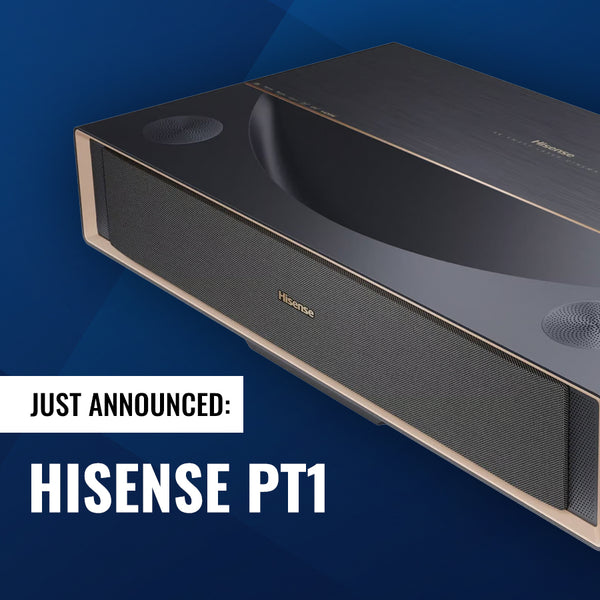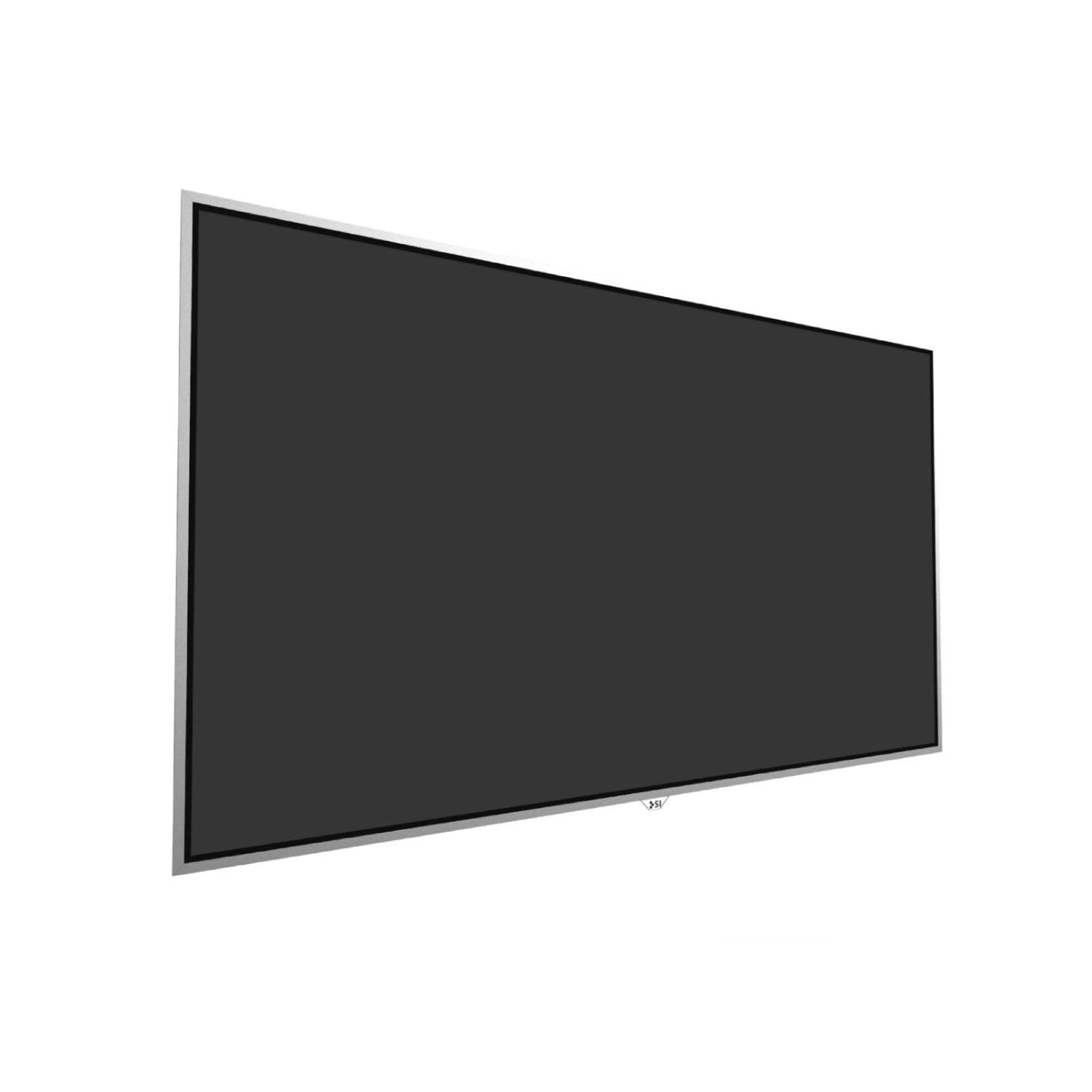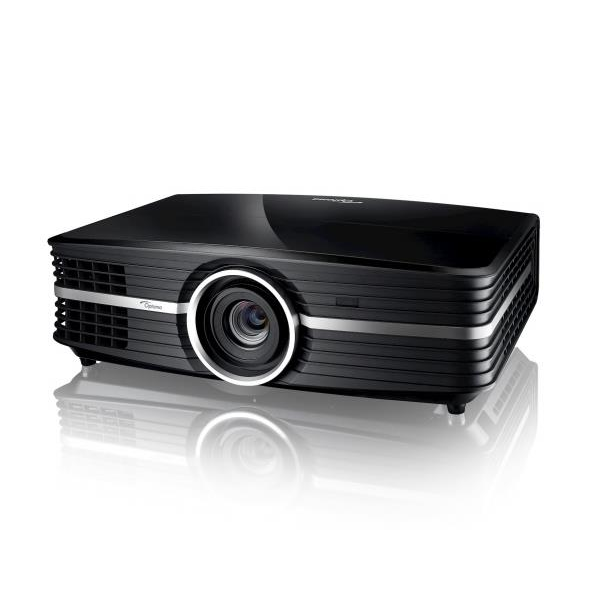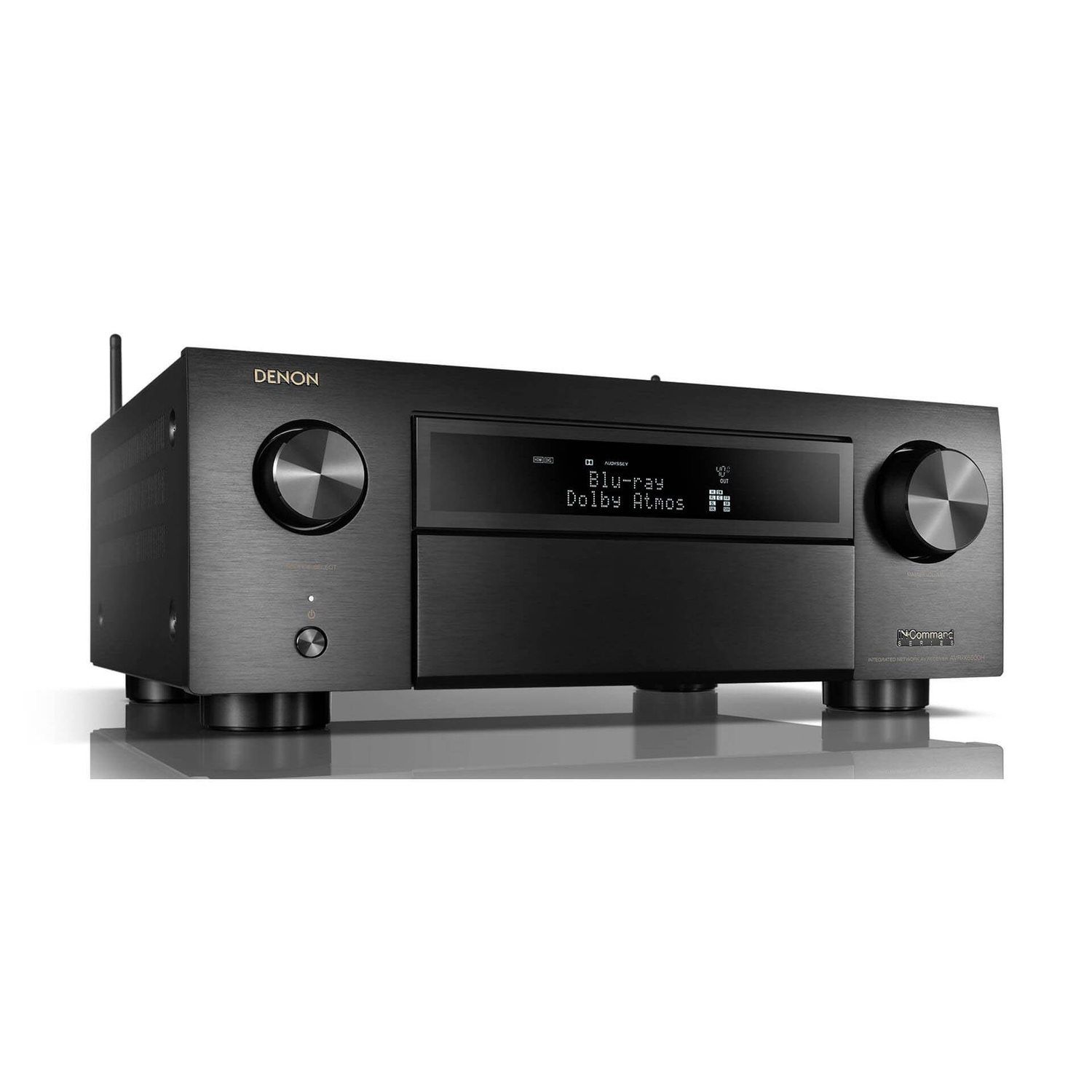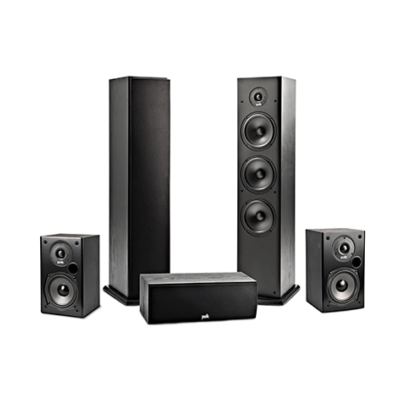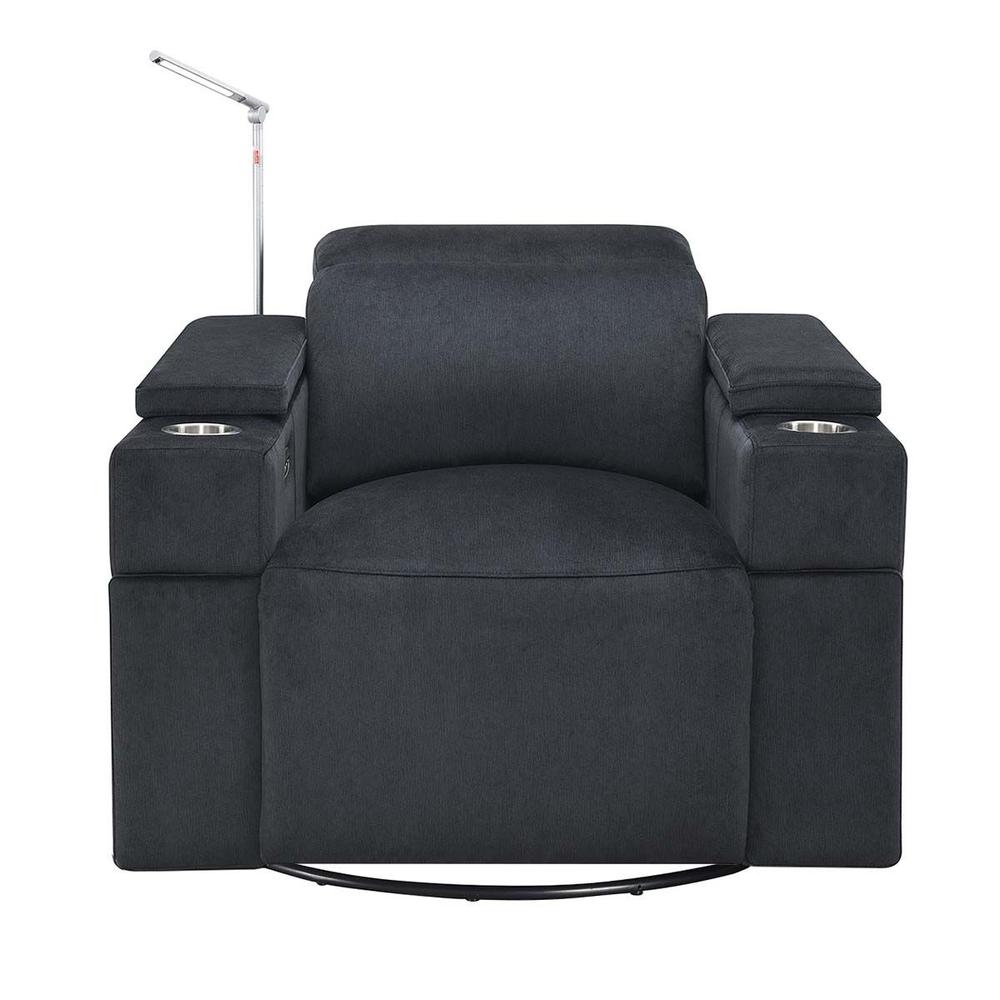Hisense C1 Cube Lifestyle Projector Review
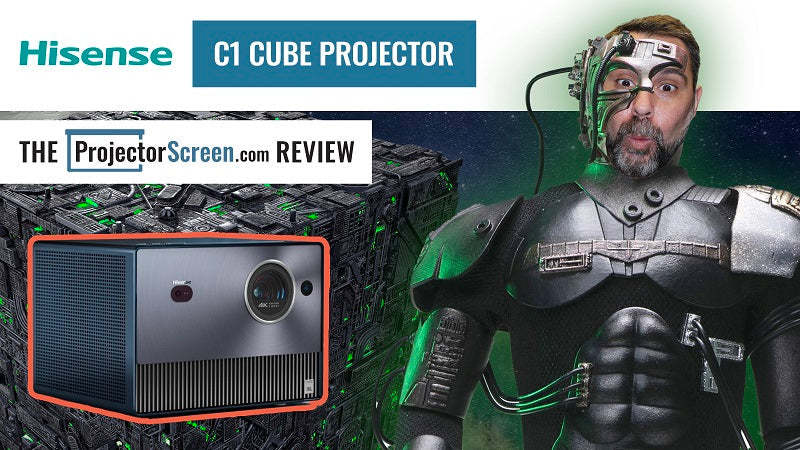
- Compact size and weight for portability
- Great value for the image quality
- Great motion handling
- Super wide 110% BT.2020 color gamut coverage
- Sharpest picture from a lifestyle projector
- Abundent picture calibration options
- Relativly powerful integrated JBL speakers
- SmartTV functions including built-in Netflix
- Wonderful colorimetry
- Low input lag
- Dolby Vision and HDR-10+ compatibility
- Low enegry usage
- Light output is lower than other similarly priced lifestyle projectors
- Only has 2 HDMI ports
- Higher end of the price range for 4K portable projectors
- No 3D support
This review of the Hisense C1 comes from our French friend Greg of MondoProjos.com. You can find the original article in French here. The review was done on the European version of the Hisense C1 cube projector, so the specs of the American version may be different. All opinions are solely his.
Chinese projection manufacturers, in addition to releasing a plethora of ultra short throw projectors, are now entering into a "cubism" period that focuses on more traditional projection with medium focal length models. These new lifestyle projectors, as they’re benign called include the JmGO N1 Ultra, the Dangbei Mars and our contender of the day, the Hisense C1 Cube, all illuminated by single or triple laser sources. They are also accompanied by small projectors like the Samsung Freestyle and upcoming LG PU700R Cinebeam.
Under a cubic shell, these lifestyle projectors are come with a built-in audio system and smartTV functions (streaming and media player) allowing them to only need a power outlet and a screen to transform any room into a home cinema in the blink of an eye.
So is it still worth going to the commercial movie theater and paying $15 to see the latest Indiana Jones? Or can we dress up at home with a hat, whip, threadbare leather and remain unshaven to put ourselves in the skin of the character without being laughed at by anyone other than our wives? This is what we will see with this Hisense C1 which will be marketed in the USA in August 2023 at a price of around $2,700.
Highlights of The Hisense C1 Cube
The approved model will be launched under the moniker the Hisense Cube C1 smart mini projector in Europe and the U.S.. However, in China there are two references: the C1 with 1350 Ansi lumens and the C1S with 1600 Ansi lumens. It is therefore an equivalent of the C1S being tested today.
From the outset, an important point to note, this is not an import device. It is marketed in a version fully adapted to the French and European market with local support and warranty. The American version of the Hisense C1 Cube may be slightly different.
Triple Laser Light Source
Hisense's cube utilizes DLP projection technology combined with a triple laser, TriChroma light source. Its 3 laser diodes without phosphor wheel allow it to produce colors that exceed the Rec.2020 color gamut, a rendering that no other technology currently available is able to match. Especially found on an affordable regular throw home theater projector.
Projection Technology
The light produced bounces off the micro-mirrors of a 0.47-inch DMD chip with XPR (×4) processing, a proven principle aimed at reproducing a UHD image by displaying all its details separately and offset at very high speed.
With its XPR processing, the C1 supports 4K sources with HDR10 and HLG static metadata but also all sources with dynamic metadata, therefore Dolby Vision and HDR10+.
To perfect the projection experience, the built-in sound system has been developed in collaboration with JBL (Dolby Atmos compatible) and the on-board connectivity is complete. In particular, there is an HDMI 2.1 port.
Its video processing has an image interpolation option and an input lag reduction mode. It supports 1080p signals at 240hz.
Smart Projector
The Vidaa interface is borrowed from the brand's televisions and with its smart TV functions you will benefit from many integrated streaming programs (Netflix, Amazon Prime Video, Hulu, Disney+, HBO Max, YouTube etc.).
The Body
Perfectly at ease in the “cubic projector” generation , the C1/S , despite its compact size, is not really a projector to take in your vacation suitcase (it weighs nearly 11 lbs). It needs a separate power supply which complicates a fixed ceiling installation; use in the "table" position is the easiest. While not a true portable projector, the compact size and relative light weight still allows for substantial portability. This lets you move it around the house as needed and even outside with an extension cord.
Under the projector there is a screw thread for a tripod and four unscrewable feet at the corners. Its optical block with a projection ratio of 1.2:1 makes it possible to obtain a basic image of 100 inches in 16:9 format with a throw distance of about 9.8 feet. No mechanical zoom being present, it is the position of the device that will determine the size of your screen.
Screen alignment, focusing and obstacle detection start automatically when switched on thanks to intelligent and motorized management of the optical unit.
Connectivity
At the back, there are 2 HDMI sockets including one 2.1 (1) and the second eARC (2). Then a LAN, 2 USB (3.0 and 2.0), 1 audio and 1 digital audio out complete the table of available sockets.
The black remote includes direct access keys to Netflix, Disney+, YouTube and Prime Video.
Menus
For its smart TV functions, the C1 embeds the Vidaa operating system with the direct integration of the main streaming service providers such as Netflix, Prime Video, Canal+ or Disney+ in full versions, therefore with 4K HDR, Dolby Vision or HDR10+ if your internet connection allows it. Other features such as Apple Airplay 2, Android screen transfer, Alexa connectivity or voice control are available.
Thanks to its integrated multimedia player, it can play content such as videos, images and music via a USB key or a hard disk, whether formatted in NTFS or FAT32. The following file formats are supported:
Video formats: AVI, WMV, MP4, MOV, 3GP, MKV, MPG, MPEG, VOB, FLV, OGM, WEBM Audio formats: MP4, MP3, MP2, FLAC, WMA, WAV Image formats: JPEG, BMP, PNG , GIF, WEBP
Before moving on to the study of the menus and options dedicated to the image of the C1 I must open a small parenthesis of context which will make it possible to better understand one of the reasons for my enthusiasm for this Hisense cinema laser projector.
I have been calibrating projectors for several years during their reviews and the decision was made to certify this self-taught experience of video calibration by participating in official training recognized by a world-renowned label: PVA.TV . It is now done and after having passed all the necessary exams and courses here I am happy holder of the PVA professional calibrator certification. This label, associated with my devices, guarantees the seriousness of my measurements and calibrations (Jeti 1501 Hi Res reference probe, Murideo pattern generator and Chromapure professional version and Calman Studio software).
Here is this parenthesis closed, but it is to say that it is easy for me to recommend the C1 to all lovers of colorimetric precision because in this area, nothing is missing.
Separate adjustment of RGB levels to 2 (Gain and Bias) or 20 points (the most precise), Gamma editor, CMS on the 3 Gamut axes, everything is there to achieve a result with a deltaE of less than 2 (standard of PVA calibrations).
Video processing is not to be outdone with fine management of image interpolation. The brand has also thought of Gamers with support for 1080p signals at 240hz and an ALLM mode (Auto Low Latency Mode) on its HDMI 2.1 socket.
The C1 offers several image modes depending on the detected source including standard, cinema day, cinema night, dynamic, sport, filmmaker mode for SDR signals. The detection of HDR signals gives access to their equivalents.
The light output of the projector can be finely adjusted in steps from 0 to 10 and a dynamic contrast management device is also present.
In the menus there is also a standard then expanded HDMI option, which switches from a 4:2:0 YCbCr format at 10 bits to that of 4:2:2 at 12 bits.
Technical Verdict
Image Sharpness:
The manufacturer leaves nothing to chance and has selected optics that do justice to 4K sources without chromatic aberrations and blurring of the edges of the image. The sharpness adjustment is not too advanced and the overall result is more than satisfactory for lovers of the precision offered by the DLP image.
Fluidity And Motion Handling:
You can be very attached to color precision and not consider a DLP projector without image interpolation. This is my case ?? If I understand the motivations that lead to proposing a Filmmaker mode as a publicity argument, i.e. a mode in which all video processing has been deactivated, I cannot bring myself to do the impasse on fluidity aids as soon as they are present.
The current DMD chips do not make it possible to obtain an image devoid of judder because they apply a conversion of the incoming signals to 60hz. This process generates what is called judder which results in micro-slowdowns and loss of precision in tracking shots. In cinema, 24p purists are used to it and can cry heresy when video processing is applied to improve the rendering, but for my part the scandal lies more in the very nature of the old cinematic rendering limited to 24 images/second when there are higher rates which undoubtedly give a much more realistic effect, and that's not new.
In short, the C1 offers a very effective tool against judder and it would be a shame to deprive yourself of it, especially since it is possible to fine-tune it on a scale of 0 to 10 to successfully reconcile natural rendering and fluidity. For me with the C1 it is level 7 that suits me best.
Colorimetry and Gamma:
We must be pleased that the C1 has all the tools necessary for expert calibration because the results offered by the different image modes out of the box do not allow you to skip the step in question. Otherwise, it is the “FILMMAKER MODE” selection and its 6634K and deltaE deviation of 6.2 which are the least far from the benchmarks.
The study of the native Gamut (the color space) of the C1 shows that the manufacturer's promises are kept. The triple laser light source allows you to exceed the BT.2020 triangle by reaching 110% coverage. This would exceed the coverage found on triple laser UST projectors like the Formovie Theater and Hisense L9G.
To calibrate the projector while respecting a delta difference of less than 2 (the ideal being white point at D65, Gamma at 2.4) I started from Filmmaker mode by applying the corrections indicated in the table below:
After calibration the deltaE deviations are 1.9 with a Gamma corrected at 2.38.
HDR management:
On static metadata, the C1 applies a management that takes into account encodings up to 1000 nits. Beyond that, clipping issues appear and the whites are burnt, losing all the details. The pictures below will allow you to judge for yourself.
With Dolby Vision and HDR10+ sources, the user can have an HDR experience without pulling their hair out as the correct mapping is taken care of by the projector in real time.
Contrast and Brightness:
Hisense promises a maximum brightness of 1600 Ansi lumens. They're nearly there in the standard selection with 1568 lumens measured at 100% laser power.
To obtain the very wide Gamut, the C1 is not obliged to use a color filter and it therefore benefits from all the power of these widened colors (i.e. approximately 67% of the visual spectrum perceptible to the human eye and only 34% for the rec.709) with its full light output.
After calibration, the C1 is able to project a basic 100 inch image in 16:9 format while maintaining a luminance of 16 fL. For 4K sources in the same post-calibration conditions, you will have to limit your ambitions to 78 inches (see the table below).
For the contrast, the choice is given between the native one or the native/dynamic contrast! Explanation: the sequential contrast measurements (Full On Full Off: FOFO) are identical, this is often the case on Hisense projectors .
Fortunately, the native is good (even very satisfactory for a DMD 0.47 chip). It maxes out at 1427:1 in standard mode and 1150:1 after calibration. This again is better than the advertised 1000:1 contrast.
The ANSI contrast amounts to 218:1, which is in the high average of projectors.
Uniformity:
On a 4K white chart with 15 measurement zones, the verification of uniformity shows that no box has a deltaE difference greater than 2.77. It's excellent and it makes the C1 one of the best projectors tested in this field since I have been taking this type of reading with my Jeti 1501 Hi res spectrophotometer .
Incidentally, it should be noted that this type of professional probe is the only one able to take precise readings on laser projectors like the C1 thanks to its optical resolution of 2 nm. Commercial probes cannot compete and above all they have reading errors that can exceed 10%.
Input lag:
Thanks to its game mode, the C1 manages to reduce the display delay to 39.3 ms with a UHD input signal at 60hz. This is well below the mark of 50 ms to be awarded the “Gaming compatible” stamp from mondoprojos.fr.
Overscan, gray border:
The cropping (overscan) setting is disabled by default, as evidenced by my dedicated 4K test chart. So unless you want to lose parts of your image leave it inactive.
The C1 's DMD 0.47 chip won't save you from the all too famous gray border surrounding the useful image, and it's 3 cm wide. If you have a screen with a black border, it may be wise to use it to conceal the phenomenon.
Laser speckle or speckle:
Speckles or speckle (the literal translation of laser speckle) are imperceptible with the C1, verification made on a white Vividstorm projection screen. This is a big difference from some of the other laser based lifestyle projectors we’ve seen recently.
Quality of the integrated sound system:
On the rendering side of the built in sound system, I who swore only by the quality of the integrated solutions Yamaha ( Epson ), Bower & Wilkins or Denon (Formovie), well I now have to reckon with JBL. This other big name manages to produce in the C1 a precise, ample and convincing soundstage if you limit yourself to a space of less than 20 m².
These 20W JBL speakers are still plenty loud enough for a small outdoor movie night in your backyard.
Operating noise:
A bit of teasing. The C1 was about to receive the medal of discretion but another cubic laser model will soon steal this honor. Still, having taken care to carry out a weighting in my measuring room (33.9 dB projector off) I only found a small 34.3 dB from the Hisense cube in operation. It should be noted that the variation in the power of the laser does not lead to a change in the ventilation which remains confined to this very low noise level.
Power consumption :
If the front diffusers based on LEDs are the least greedy in electrical energy, the triple laser cube will not give you an ulcer when you discover your electric bill. At 100% power it requires only 120.3W on a 100% white target, and if you lower the laser level to 50% its requirements are reduced to 68W.
Subjective Opinion
Unlike the Formovie X5, ALPD 4K mono laser cube projector, the C1 supports all consumer 2D SDR and HDR sources on the market.
The new Hisense is therefore, as Leeloo would say, the moultipass of projection, following in this the ultra short focal length models of the brand. It is important to note this because globally on the current offer, to have dynamic metadata management it is either Dolby Vision ( Formovie ) or HDR10+ ( Epson , JVC and Samsung) but to have both, it is only at Hisense at the moment.
In short, if you are a fan of streaming on Netflix, Prime Video and Disney+ you will no longer have to choose your format, it does them all!
Hisense's trichroma lifestyle projector is an excellent surprise in SDR as well as in 4K HDR. It is a balanced model for contrast, luminosity, precision and fluidity and it is gifted with regard to color reproduction thanks to the extent of its super wide color gamut.
Regarding contrast, an oh so important part of the image with the accuracy of skin tones, the blacks produced by the C1 are convincing without being exceptional. Below are some images from 65 The Earth Before 4K HDR and the beginning of the film during which the pilot of the crashed ship explores the nearby swamps with a mix of dark and light elements.
These photos were taken on a white Vividstorm screen and not on a gray ALR canvas.
Even though most 4K HDR movie encoding is done on a DCI-P3 Gamut, the C1 's image takes advantage of the wide Gamut rec.2020 with vivid and strong colors.
The management of dynamic metadata with Prime Video films and series in HDR10+ and/or Dolby Vision (Reacher, The Last Of Us) or even on Netflix is ??the icing on the cake offered by this cube and the guarantee of an image high quality dynamic without the fuss.
Conclusion
If you are looking for a projection Swiss army knife, i.e. a device capable of supporting all the 2D SDR and 4K HDR formats available to the general public in physical or dematerialized version and you do not want a projector at ultra short focal length, the choice is self-evident: it's simply the one offered by the Hisense C1 . It's not a thunderbolt of luminous power, it will have to be given better to serve in a dark room and not too big a screen, but, therefore, Mondoprojos can only appreciate when the cinema is so well valued.
Also keep in mind that this is a triple laser projector with full Gamut rec.2020 coverage, which no laser projector from Epson, JVC or even Sony is able to offer at this time.
It is therefore necessary, me first, to congratulate Hisense for having seized the way of the samurai in a beautiful way, ie home projection by leaving its primary paths of Laser TV and their fixed image size.
This Chinese manufacturer, after having experienced success in the marketing of flat screens, is becoming a very serious competitor in video projection against older and/or more established brands. Above all, he has the audacity to innovate, to hit the mark and to question himself. And besides, it arrives by a regular silk road, directly in our stores with a guarantee and after-sales service, which in addition to the quality can make its price understandable.
The C1 is therefore a device that I recommend, praising the quality of its image, its design, its beautiful balance, and I would like to emphasize that the machine is a delight to calibrate thanks to its complete settings menus.
As a reward for all this, it is with pleasure that he is awarded a double Gold Award mondoprojos.fr.
What I liked:
- The discretion of operation
- Energy frugality
- Spades
- The fluidity
- Post-calibration colorimetry
- Perfect menus for calibration
- The triple laser light source and its extended gamut
- Full smart TV functions, including Netflix
- Reduced input lag
- JBL sound
What I didn’t like:
- Well….. I'm still looking!
- It doesn’t support 3D
- It only has two HDMI ports

